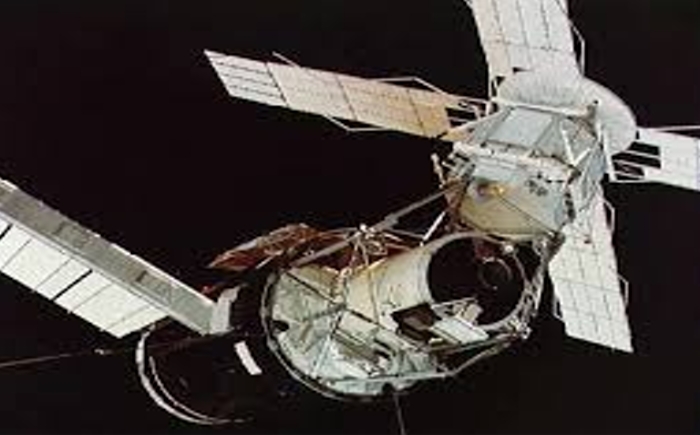Featuring Video from STS-71 - First Shuttle-Mir Docking
Those who remember the Cold War and the intense distrust extending beyond politics and finances will recall the historic handshake of Astronaut Stafford with Cosmonaut Leonov during the Apollo/Soyuz Mission (July 17, 1975. Apollo-Soyuz Test Project (ASTP)), which heralded the first real joint co-operation in Space between the USA and the Soviet Union. A co-operation which then went on to the crewing by Americans of the Mir Space Station during the 11-mission Mir-Shuttle. Space Station Mir was put into orbit by Russia in the 80’s at the height of the Cold War. It led to sharing of the information gathered regarding the effects of long duration stays in space.

The Americans had already spent 84 days in Space on the USA’s Skylab in the 1970’s, setting this record during the Skylab 4 mission and it would take the Russians two decades to break this record. With the advent of Glasnost and Gorbachov’s Perestoika, the thaw in relations went on to include both the sharing of duties and crew places on the International Space Station (ISS), as well as the use of the Russian Soyuz rocket to ferry Astronauts and cargo back and forth from the ISS to Earth.
The thaw in relations between the space faring nations continued with the USA, Japan, India, and the EU all co-operating with each other and Russia pooled information regarding the scientific data collected during the operation of any action in space (though obviously not military). This led to a veritable cornucopia of information becoming available to scientists in all fields, even if not directly involved in space itself. The shared knowledge led to many breakthroughs in understanding and technological advances, which had the effect of benefitting humanity in many ways. With the advances in technology, the information available was re-examined and previously unfound or invisible data appeared.
Due to the inclusion of many other smaller nations whose scientists had access to the data, scientific knowledge flourished. And that was despite the many critics of the cost of the International Space Station, which was often dubbed in the press as a ‘White Elephant’. Even the true scientific value of this outpost in low Earth orbit was constantly debated sometimes among the most ardent advocates of man’s presence in space.

The Chinese proved their entry into the major league by not only landing and operating two rovers on the Moon (Yutu 1, Landed 14 December 2013 and stayed operational for 31 months; Yutu2 landed and was still operational on 3 Jan 2019) but then went on to land the rover Zhurong on Mars on 15/05/2021. Considering it was a maiden voyage, it was a fairly astounding accomplishment and better that any other first time voyage that had reached Mars before them. A mind-blowing triad orbiter lander and rover in one shot. Not only did they succeed in their endeavors, but they did it unaided (albeit many of their designs are modeled on the Russian ones and of course in this industry, like many others, nothing stays secret for long). Their ventures in low-manned space flights cumulated this year with the launch of the first segment of their space station Tiangong. The segment, Tianhe, is similar to the core (central) module, Zarya.
Off the record, the Russians were keen to add modules of their own and approached the Chinese regarding this. The Chinese apparently rejected the proposition; however, this information must be considered cautiously when we know that there are multiple common space projects in between the two nations. The other space-faring countries, apart from the UAE (which has the funds), are co-operating for financial, technological, and logistical reasons. But the ISS is coming to its end. And with that is the ever-increasing chilliness in the relationship between the USA and Russia. This became apparent when the Russians were not included in any way, unlike the EU, in the formulation and expedition (except minimally for appearances) of the Gateway Station that the USA (through NASA) had approved as part of Artemis and their Moon program, including base/s on the surface which tie into the eventual humanlanding on Mars of.

This closure of avenues in cooperation for mutual benefit does not bode well for communications, especially in the scientific realm which underpins all that we take as part of life and gives us the ability to issue ‘control’ to our advantage. Space is the future of humankind, since many of the answers to the questions we ask are going to be found in the accumulated data we gather from our explorations and careful examination of what we collect. As a race, we will be disadvantaged if the competition heats up appreciably and knowledge once again becomes a guarded treasure reducing the panoply of minds that can access it. It will only slow down and maybe even prevent the dissolution of information, which applied thought can turn into major advances in all fields, as progressively fewer scientists have access to it.
What is not written does not exist.
© The International OutsiderC0.Reg.No SC715702 . All Rights Reserved. Design by HTML Codex